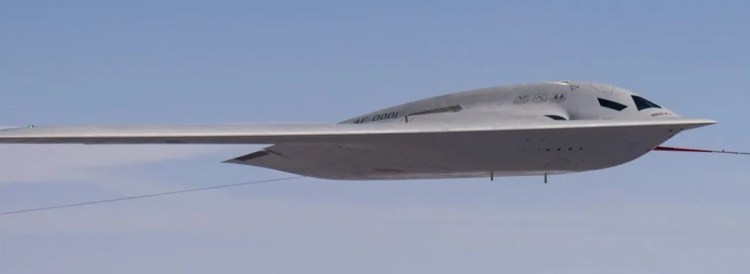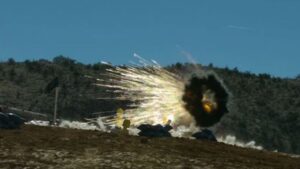The recently revealed Northrop Grumman photo of the sleek, stealthy airborne B-21 Raider bomber presents a new and significant view of the mysterious and largely “black” aircraft, a next-generation platform reported by Pentagon weapons developers containing paradigm-changing technologies in the realm stealth, sensing, computing and high-altitude, high-risk bombing attack.
Clearly many of its stealth properties and advanced technologies will not be available for public discussion given the secret nature of the program, yet the recent photo does offer an as-of-yet unprecedented side-view of the new aircraft. A quick look at the external configuration would seem to suggest that indeed the aircraft may contain massive “leaps-forward” in the realm of stealth technology.
A key element of the aircraft might jump out at observers, as its “inlets” are smoothly woven into the rounded fuselage-wing-body structure in a way that is flatter, more horizontal, less angular and more seamless than its B-2 predecessor. Simply put it is less vertical and flatter in its integration with the body of the aircraft, something of great significance because any kind of protruding or vertical structure, however rounded or “blended” into the fuselage of the aircraft, introduces the prospect of an increased radar signature. Vertical structures and sharp angles, in pure aerodynamic terms, create shapes, angles and contours electromagnetic radar “pings” are able to bounce off and generate a return rendering. A completely flat aircraft, by contrast, offers few if any protruding structures or angles off of which radar pings traveling at the speed of light can bounce off. Radar and air defense systems, of course, generate a picture or rendering of a threat object by virtue of bouncing electromagnetic signals off of a structure and analyze the return, thus creating a rendering or image of some kind of the size, shape or even speed of the object. This is why the F-35 and F-22, while quite stealthy and believed to be effective against many air defense systems, are ultimately less stealthy than a fully horizontal blended wing-body aircraft such as the B-2 or B-21.
This makes sense, as a B-21 is not designed to “dogfight” or vector in the air per se but instead actualize “broadband” stealth and “penetrate” defended enemy airspace without an enemy even know it is “there” at all. B-2 and B-21 bombers therefore, are said to present as a “bird” or small airborne animal to enemy radar, given the absence of detectable “shapes,” “structures,” and angles contained on the fuselage. Vertical structures, such as tails and fins for example, decrease stealth properties to some extent while simultaneously enabling maneuver, speed and air-to-air combat. At the same time, an ability to maneuver at high speeds and “vector” in the air are things which in and of themselves are stealth enhancing, radar signature reducing attributes, something capable of presenting challenges to ground-based radar seeking to establish a “target lock” or “track” on a threat object.
The intent of broadband stealth is to be entirely “stealth,” meaning the aircraft can elude both lower-frequency “surveillance” radar able to detect something is “there,” and higher frequency engagement radar able to establish a track and lock on the target and actually “engage” and destroy the aircraft.
Also, looking at what can be seen in relation to the back of the airplane, there are no exhaust pipes or area. None? At least none that can be seen. This could be extremely significant, as thermal signature management is among the most important variables in the realm of stealth; the closer an aircraft is to its surrounding temperature and the less “heat” it emits, the less detectable it is to infrared or thermal sensors. It certainly could be true that an internally buried engine and certain unknown or yet-to-fully-exist technological systems have massively lessened or removed the aircraft’s heat emissions. There are known to be many advanced “cooling” technologies, yet it might indeed seem paradigm-changing if the B-21 were somehow able to operate with a new generation of thermal management technologies.



